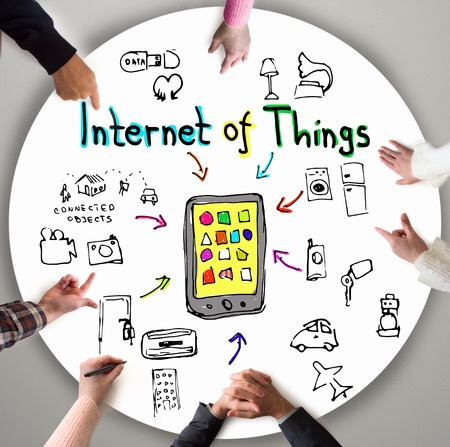So You Don’t Think IoT Applies to You? Think Again.
 Mike Keer is the CEO and Founder of Product Realization Group (PRG), a consortium of Silicon Valley companies that take hardware products from idea to scale. PRG is also a trusted Arena partner that has helped our clients source for prototype design and build, cost-reducing insights, and scalable manufacturing. His clients include medical device, consumer electronic, high-technology startups, SMBs, and large companies such as GoPro and EMC. Keer is especially focused on helping companies succeed in the Internet of Things (IoT) space. In this two-part interview with Mike Keer, we discuss why the IoT market is so vibrant right now and what companies need to do to succeed.
Mike Keer is the CEO and Founder of Product Realization Group (PRG), a consortium of Silicon Valley companies that take hardware products from idea to scale. PRG is also a trusted Arena partner that has helped our clients source for prototype design and build, cost-reducing insights, and scalable manufacturing. His clients include medical device, consumer electronic, high-technology startups, SMBs, and large companies such as GoPro and EMC. Keer is especially focused on helping companies succeed in the Internet of Things (IoT) space. In this two-part interview with Mike Keer, we discuss why the IoT market is so vibrant right now and what companies need to do to succeed.
Arena: Discuss the IoT market. Why is it so hot right now?
Keer: The IoT market is disruptive, dynamic, and growing rapidly — between 2013 to 2020 the world will move from half as many to twice as many connected IoT devices. By 2020 there will be over 30 billion connected devices. IoT will impact every aspect of our lives, and transform how we interact with both physical and digital worlds. From virtual reality to self-driving cars, to wearable devices, the opportunities are endless. Of course, there are real risks to privacy and security which will have to be addressed as more and more personal information is tracked, communicated, and stored in digital format.
Arena: It seems like IoT can theoretically affect every industry. Products that you once could not imagine having electronic components now do. Can you elaborate on the endless opportunities this offers to companies across industries?
Keer: With the proliferation of electronic components into most new devices, companies now have the ability to enable much more powerful products. Products that not only perform a function, like a bike taking you from home to a shopping market, but can now ‘know’ how long it takes, how many stops or patterns you make or let you know if the bike is stolen and help to track it down. We are entering a quantified world, so hold on to your IoT hat. This new paradigm will also create challenges as businesses that are traditionally low tech, such as clothing manufacturers, will be forced to add electronics and higher labor costs into production to address these new opportunities.
Arena: What tools do IoT companies need to overcome manufacturing challenges?
Keer: Companies in the IoT space need to be great at the integration of software, hardware, and big data. The IoT companies PRG encounters most frequently are those that have strong software teams, but not much hardware experience. They often underestimate the time it takes and the risks associated with developing hardware products, managing product data and commercializing these products. Arena PLM helps to store, control, and communicate this product data across global design and supply chains — which makes it an essential tool for these IoT companies.
Arena: Are the pain points that IoT companies face broadly across industries? Are the challenges the same or different across industries?
Keer: Pain points vary widely across industries. IoT for enabling a smart city has very different dynamics than for a smartwatch. Regulatory hurdles for a government project may take decades to address, whereas, a consumer product could go through multiple generations of changes in the same timeframe. Adoption rates for IoT also vary widely — with retail, consumer products and manufacturing leading the way, and financial services, natural resources, and education taking longer to adopt.
Arena: Things change so quickly in IoT. As you well know, disruptive change can impact the market overnight — in the blink of an eye. Talk about the need for Product Lifecycle Management (PLM) to corral change and help companies move in a new direction quickly.
Keer: One of the biggest disruptions in IoT products is changes in electronic components. Sensors, controllers, and batteries are all rapidly evolving to better support new applications. Examples would be wearables that need smaller and lower power consuming parts — after all, you would not want to buy a smartwatch that weighed 10 lbs and runs out of juice in 4 hours.
Having a tool like Arena PLM keeps track of these electronic components, and to better understand which parts are going obsolete can provide a competitive edge for IoT companies. A strong PLM system can enable the successful execution of a technology pivot, facilitate a contract manufacturer switch, or accelerate new product launches.
Tune in later this week to read Part II of our conversation with Keer.


